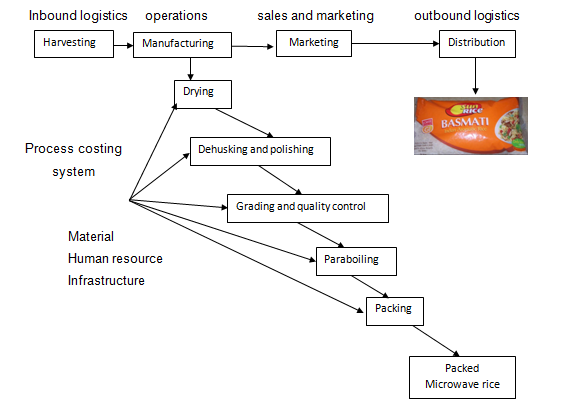Introduction
Sunrice is a rice processing and manufacturing company. The company was created in 1950 by rice growers who concentrated funds with an aim of establishing their own cooperative and a rice mill. The rice mill was built at Leeton in Riverina. By 1955, the newly formed corporative had began packing rice which was branded as Sunwhite rice.
At this time nutritional content and quality of rice were put into consideration in the Australian rice market. From this time, the company adopted new technology as well as research and development which subsequently led to innovation of new products ranging from rice to rice products.
Sunrice Company got its first great opportunity in 1970s after its migration from Asia which was an important move that led to changes in the Australian cities overnight. Most of the restaurants in the cities adopted rice as their main carbohydrate (Sunrice 2011).
As Australia increasingly became cosmopolitan, its citizens became more interested in Asian food which subsequently led to a new rice market. In its marketing campaign, the company adopted a rice sculpture which got an international award. The sculpture was made with a lot of creativity and thus it helped in increasing consumption of rice in Australia.
Due to stakeholders’ cooperation and the growth of the company, Sunrice became one of the major rice manufacturing companies globally. About 70 percent of rice harvested in Australia is distributed to approximately 40 million consumers around the world (Sunrice 2011).
For over 80 years the rice manufacturing industry has faced challenges related to the environment. Sunrice Company consists of several integrated companies with consolidated financial statements.
Business process and value chain analysis
Microwave rice is packed rice embraced by customers due to its diverse formats that are unique to the company’s brand. A value chain analysis is used by many organizations in determining the type of competitive advantage to adopt.
A value chain can be categorized into an industry’s value chain and an internal value chain in a firm. The value chain within an industry comprises of activities that create value in the industry. This begins with the firm obtaining the raw materials, followed by processing/manufacturing and ending with an end product reaching the consumer.
A basic value chain model comprises of two groups of activities: primary activities and supportive activities. The primary activities help the company create and deliver its product. Supportive activities on the other hand help a firm to increase its effectiveness and efficiency. Supportive activities include the use of technology, human resources and material in the company (Schmitz 2005).
However, all the activities a company undertakes are expected to help it in achieving a competitive advantage. Any company with an aim of outperforming its competitors by using quality differentiation must ensure that the activities used in its value chain are better than those used by their competitors.
In any company, a process costing system is of great importance since its helps to assign all the cost used in production to the processes involved as well as all departments (Donelan & Kaplan 1998). Microwave rice production involves several processes such as rice harvesting and supply, manufacturing, marketing and sales as well as distribution.
Rice harvesting and transportation into the company can be referred to as inbound logistics. Other supplies in the inbound logistics include packaging bags and flavors used in manufacturing different types of rice. These flavors include vegetable curry, fried rice flavor, egg fried rice flavor, chicken rice flavor, brown fried rice flavor, roasted vegetable flavor, brown rice flavor, basmati rice flavor, Mexican style flavor and coconut rice flavor.
Manufacturing of rice involves many processes and different departments. This stage is referred to as operations in the basic value chain model. The other step involves products marketing and sales. The last step is called outbound logistics where the packed microwave rice is distributed to the consumers.
Marketing is a continuous activity that involves advertising, offering of promotion as well as use of other marketing tools. In each of these steps the value and the cost of microwave rice increases.
Sunrice Company at times offers harvesting services to farmers. The company later subtracts the harvesting cost from the farmers’ account. After harvesting, rice is transported to the industry for further processing. This further increases the cost of microwave rice which is expected to be the end product.
The production of microwave rice is done in 5 departments as shown in the figure below. These departments include the drying department, dehusking and polishing department, grading and quality control department, the paraboiling department and the parking department.
In the industry rice is dried before dehusking and polishing. Further, rice is taken to the quality control department for quality analysis before it is graded. At this stage rice is graded according to its quality. Microwave rice at this point is taken through the process of paraboiling before packing. After it has been put into packets and its ready for sale, outbound logistics comes into place.
After marketing, this rice is distributed to different countries in the world for sale. The cost incurred in the first processing stage is a part of the second department cost. This continues to the final stage where the final product cost incorporates all the other costs. In the costing system the cost incurred in one department is transferred to the following department.
Other factors considered in the costing system include human resource, the cost of the materials used in processing rice and the infrastructure. The factors further increase the cost of the final product which is microwave rice.

Figure 1: Value chain model
List of References
Donelan, J. G. and Kaplan, E. A., 1998. Value chain analysis: A strategic approach to cost management. Journal of Cost Management, 12(2): 7-15.
Schmitz, H., 2005. Value chain analysis for policy-makers and practitioners, Geneva: International Labour Organization.
Sunrice. 2011, A truly international food business. [online] Available at: https://www.sunrice.com.au/about-us